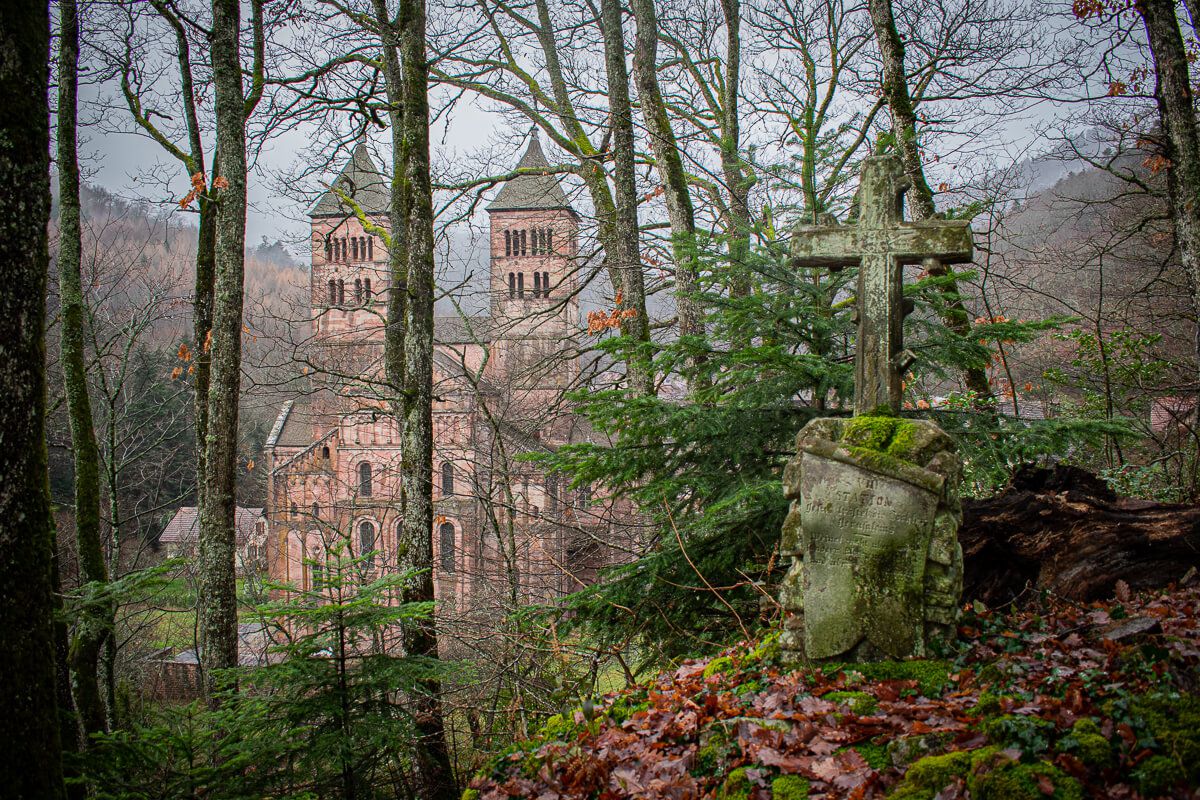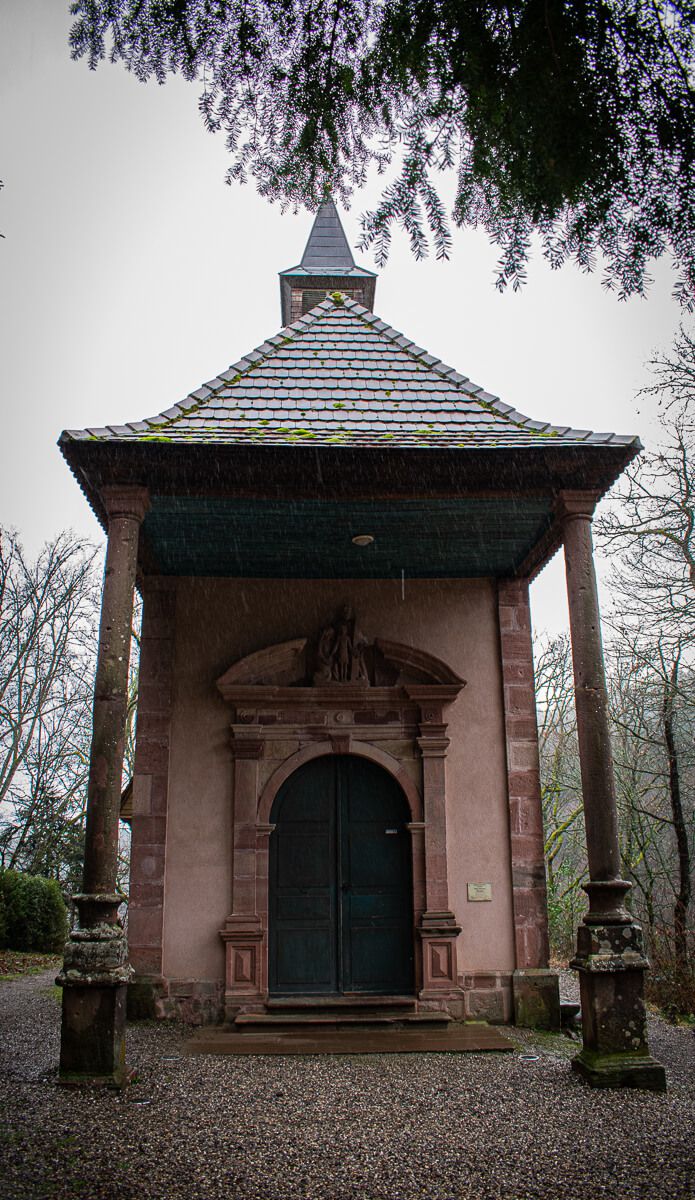Of course, we "know" Murbach Abbey, located in the Guebwiller Valley, because everyone has seen it countless times on their Instagram feed: it's one of Alsace's postcards. However, beyond the beautiful photos that we can take of the place, we do not know the history of this religious temple. Shall I tell you about it?
A stage of the Romanesque Road of Alsace in the Haut-Rhin
To talk about this place, let’s start by mentioning that the Abbatiale Saint-Léger de Murbach is an emblematic site on the Route Romane d’Alsace. But what are we talking about when we talk about Romanesque art?
In short, it is the first style that brings together the different techniques used in the early Middle Ages that is clearly Christian and European. This style was born of both material prosperity and spiritual renewal, which would lead to the construction of various religious buildings, such as the buildings that are now part of the Romanesque Route.
Romanesque art developed in Alsace between the 11th and 13th centuries, and is characterized in particular by the use of pink Vosges sandstone.


Origin and history of the Saint-Léger church in Murbach
Located in the Bechenthal, at the foot of the Grand Ballon, the Saint Léger de Murbach abbey is the oldest Benedictine abbey in Alsace. We can only appreciate the rear part (where the choir is), because the nave has been amputated, and the site is now occupied by a cemetery.
The present church dates back to the 12th century, but in the 9th century, this place was already one of the main intellectual centers of the Rhine world, until it became one of the most important places of temporal power in Upper Alsace. In 1228, the emperor Frederick II of the Holy Roman Empire gave the abbot Hugo (who accompanied him on the crusade) the title of Prince Abbot. It is not for nothing that in the sixteenth century, this monastery was considered one of the four most important in the whole Empire.
What happened to the nave of the Benedictine abbey?
From its moment of glory, the abbey suffered from the “Thirty Years War”, and the monks in 1738 decided to renovate the abbey in the style of the time, the baroque. The building lost its nave in this period and, for lack of money, the work was stopped and the monks decided to ask for a transfer to Guebwiller, which they obtained in 1759.


Is the visit of the abbey of Murbach worth the detour?
Let’s be honest, if you think you’ll be amazed by the visit of the interior of the old abbey church, you might be disappointed. The Benedictines, as a monastic group, sought to distance themselves from luxury and lead a life of contemplation, so the interior of the building offers nothing extraordinary. It is worth noting that the building has the three types of vaults known and used in the Romanesque period… But I’m not sure that many people are interested in this except me! 😉
So, if you’re hoping that inside this temple you can find something cool to post on your social networks, I’m sorry to say that it won’t be the case, unless you want to photograph the tomb of 7 monks killed by the Magyars in 950 or the recumbent of Count Eberhard (who financed the construction of the abbey) which are not very Instagrammable.


The real interest of the place lies rather in its external aspect, with its facade in pink sandstone of the Vosges (typical stone of the region) and more particularly the sight that one has of it of the chapel. To get there, take the way of the cross, on the right after the portico at the entrance of the abbey church. This Way of the Cross was created by the Germans in 1872 because this place was very popular as a place of pilgrimage in the 19th century. This is the walk not to be missed during your visit!
No one seems to care about the little chapel of Notre-Dame-de-Lorette, which is the place from which the photo is taken at a distance from the abbey church! In my opinion it is worth a visit. Dating from 1693 and inspired by the “Santa Casa de Loreto” in Italy, it reveals an original and very colorful interior, which I personally liked a lot!



In conclusion: if you want to visit an architectural jewel of the Romanesque art, if you have no particular expectation about the interior of the old abbey church, I invite you to make a detour to the Abbey of Murbach!
I liked
- The outside view of the abbey church (like a lot of visitors, I made sure to post this photo on Instagram).
- The interior of the small chapel of Notre-Dame-de-Lorette.
I liked a little less
- The interior of the abbey is small and offers little to see
- If you’re coming from Strasbourg (like me) just to visit this place, I recommend that you research other activities in the Guebwiller area.
Practical information
Schedules
The abbey of Murbach is open every day from 9 am to 6 pm, in free visit (There is no special authorization to go on site).
Access
By car
- 109 km from Strasbourg (1h12)
- 36 km from Colmar (40 minutes)
- 29 km from Mulhouse (29 minutes)
Parking: There is a large parking lot, also accessible to buses, in front of the restaurant “l’auberge de l’abbaye” (100m before the abbey), at the entrance of the village of Murbach
By public transport
You can calculate your route on Fluo Grand Est.


